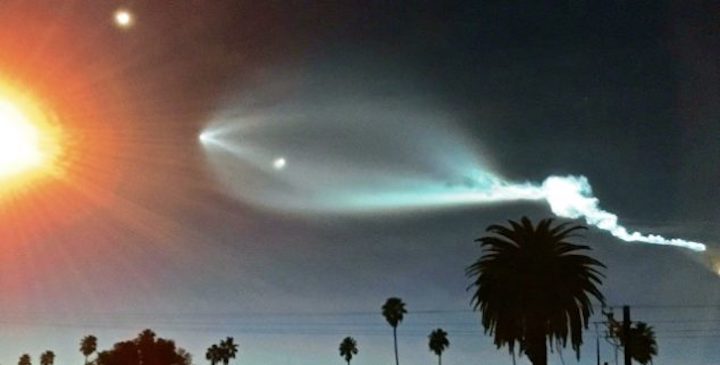1.03.2018

Will you (OK, your grandchildren) someday take a vacation jaunt to Mars? Or maybe move there permanently?
You will if California’s 0utside-the-box-thinker Elon Musk and his competitors have their way.
Non-passenger commercial space activity is already big business. Musk’s SpaceX company launches satellites into orbit, charging commercial customers $62 million per launch to as much as $20 million more for more complicated tasks, such as resupplying the International Space Station.
“That was the first real milestone and demonstrated to a lot of people that there was a market for private citizens to go to space.” — Tom Shelley
The Federal Aviation Administration has even established an Office of Commercial Space Transportation, in charge of licensing commercial space operations.
Over NASA’s initial misgivings, American businessman Dennis Tito became the first space tourist in April of 2001, when he took a $20-million ride aboard a Russian Soyuz spacecraft. He spent six days in orbit.
Since then, at least six additional passengers have taken flight at prices ranging from $20 to $40 million. Charles Simonyi, a Hungarian-born software architect, has gone up twice – in 2007 and 2009. In all, Simonyi has spent 29 days in space.
“The private spaceflight industry did start with Dennis’s flight,” said Tom Shelley, president of Space Adventures, the Virginia-based company that brokered Tito’s eight-day mission with Russia’s Federal Space Agency.
“That was the first real milestone and demonstrated to a lot of people that there was a market for private citizens to go to space,” Shelley told the Space.com website.
“I think [Virgin Galactic’s] Richard Branson and [Blue Origin’s] Jeff Bezos, and even Elon [Musk of SpaceX] — they really wouldn’t be in this industry if it wasn’t for what Dennis originally did,” Shelley said. Tito’s flight, he added, demonstrated “that this was a feasible activity for private citizens to step up and pay the money.”
The Tesla will reach a distance about 160 million miles away from the sun. It will zip past Mars but won’t quite reach the asteroid belt.
Another outfit, SpaceFlight, has a website with a feature inviting you to “book your flight” by either launch date or orbit. “We Make Getting to Space Easy & Affordable,” the site boasts.
In February 2017, Musk announced that substantial deposits from two individuals had been received by his Space X company for a Moon loop flight, perhaps by late 2018. Musk said that the cost of the mission would be “comparable” to that of sending an astronaut to the International Space Station, about $70 million US dollars in 2017.
Hawthorne-headquartered Space X’s self-description is simple:
“SpaceX designs, manufactures and launches advanced rockets and spacecraft. The company was founded in 2002 to revolutionize space technology, with the ultimate goal of enabling people to live on other planets.”
The idea took a splashy step forward Feb. 7, when Musk’s Falcon Heavy thundered into space. No humans were aboard, but it was carrying, what else, a Tesla roadster with a male mannequin seated at the wheel. Ultimately, experts tell us, the Tesla will reach a distance about 160 million miles away from the sun. It will zip past Mars but won’t quite reach the asteroid belt.
–Virgin Galactic,Sir Richard Branson’s company, declares: “As the spaceline forEarth, Virgin Galactic will always be focused on creating the safest and best customer experience through the operation of new generation, reusable space vehicles.
–“Our initial operations will give us unequalled experience of flying large numbers of non-professional astronauts, safely and enjoyably, in high acceleration and micro-gravity environments.
“At Mars, you can start a self-sustaining civilization and grow it into something really big.” — Elon Musk.
–“In time, we expect to be operating a variety of vehicles from multiple locations to cater for the demands of the growing space-user community. Whether that be transporting passengers to Earth orbiting hotels and science laboratories, or providing a world-shrinking, transcontinental service – at Virgin Galactic we will always be striving to open space to change the world for good.”
Billionaire Musk doesn’t want to stop with Earth orbits. He wants to help establish a Mars colony of up to 80,000people (about the size of Livermore) by ferrying explorers to the Red Planet for perhaps $500,000 a trip.
It would start with fewer than 10 pioneers, who would journey to the Red Planet aboard a huge reusable rocket powered by liquid oxygen and methane.
“At Mars, you can start a self-sustaining civilization and grow it into something really big,” Musk told an audience at the Royal Aeronautical Society in London.
“The ticket price needs to be low enough that most people in advanced countries, in their mid-forties or something like that, could put together enough money to make the trip,” he said, comparing the purchase to buying a house in California.
Alan Stern, vice president of the space division of the Southwest Research Institute, a nonprofit organization based in San Antonio, told Space.com the sky isn’t the limit:
“We’re seeing that the private sector can do human spaceflight, and do it at radically less expensive price points,” he said. “I believe in 200 years, when people look back, they will see this as the pivotal breakout in human spaceflight.”
Quelle: CAPITOL WEEKLY
